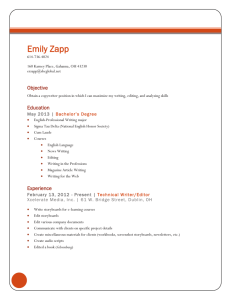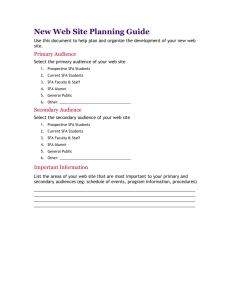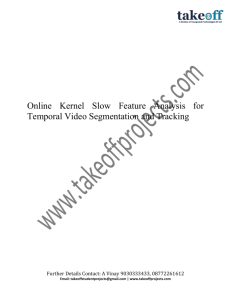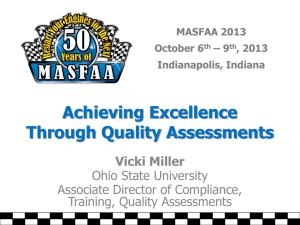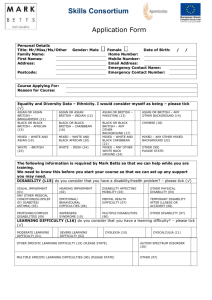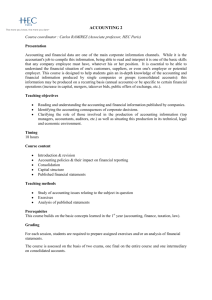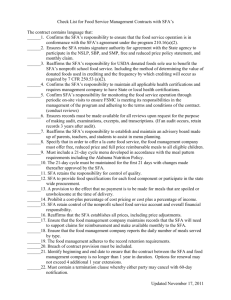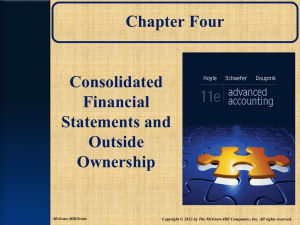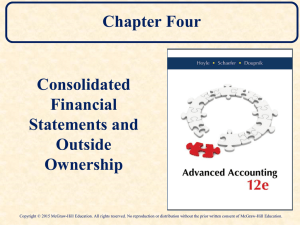In December 2007, the FASB issued SFAS No. 141 (revised 2007
advertisement
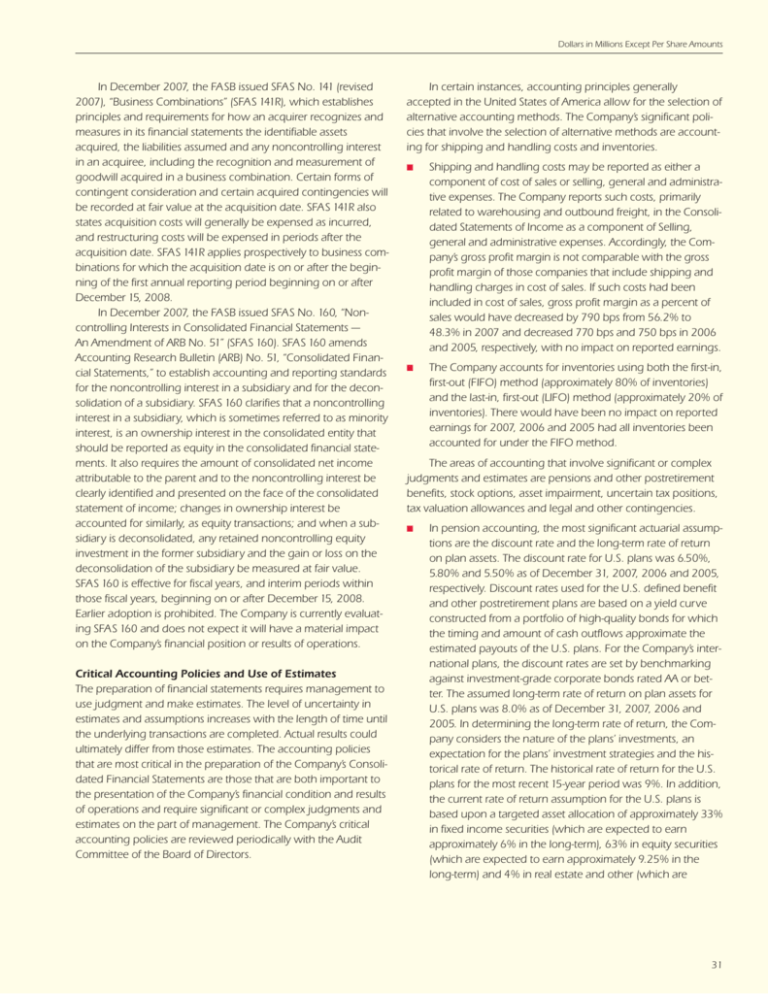
Dollars in Millions Except Per Share Amounts In December 2007, the FA SB issued SFA S No. 141 (revised 2007), “Business Combinations” (SFA S 141R), which establishes principles and requirements for how an acquirer recognizes and measures in its financial statements the identifiable assets acquired, the liabilities assumed and any noncontrolling interest in an acquiree, including the recognition and measurement of goodwill acquired in a business combination. Certain forms of contingent consideration and certain acquired contingencies will be recorded at fair value at the acquisition date. SFA S 141R also states acquisition costs will generally be expensed as incurred, and restructuring costs will be expensed in periods after the acquisition date. SFA S 141R applies prospectively to business combinations for which the acquisition date is on or after the beginning of the first annual reporting period beginning on or after December 15, 2008. In December 2007, the FA SB issued SFA S No. 160, “Noncontrolling Interests in Consolidated Financial Statements — An Amendment of ARB No. 51” (SFA S 160). SFA S 160 amends Accounting Research Bulletin (ARB) No. 51, “Consolidated Financial Statements,” to establish accounting and reporting standards for the noncontrolling interest in a subsidiary and for the deconsolidation of a subsidiary. SFA S 160 clarifies that a noncontrolling interest in a subsidiary, which is sometimes referred to as minority interest, is an ownership interest in the consolidated entity that should be reported as equity in the consolidated financial statements. It also requires the amount of consolidated net income attributable to the parent and to the noncontrolling interest be clearly identified and presented on the face of the consolidated statement of income; changes in ownership interest be accounted for similarly, as equity transactions; and when a subsidiary is deconsolidated, any retained noncontrolling equity investment in the former subsidiary and the gain or loss on the deconsolidation of the subsidiary be measured at fair value. SFA S 160 is effective for fiscal years, and interim periods within those fiscal years, beginning on or after December 15, 2008. Earlier adoption is prohibited. The Company is currently evaluating SFA S 160 and does not expect it will have a material impact on the Company’s financial position or results of operations. Critical Accounting Policies and Use of Estimates The preparation of financial statements requires management to use judgment and make estimates. The level of uncertainty in estimates and assumptions increases with the length of time until the underlying transactions are completed. Actual results could ultimately differ from those estimates. The accounting policies that are most critical in the preparation of the Company’s Consolidated Financial Statements are those that are both important to the presentation of the Company’s financial condition and results of operations and require significant or complex judgments and estimates on the part of management. The Company’s critical accounting policies are reviewed periodically with the Audit Committee of the Board of Directors. In certain instances, accounting principles generally accepted in the United States of America allow for the selection of alternative accounting methods. The Company’s significant policies that involve the selection of alternative methods are accounting for shipping and handling costs and inventories. I Shipping and handling costs may be reported as either a component of cost of sales or selling, general and administrative expenses. The Company reports such costs, primarily related to warehousing and outbound freight, in the Consolidated Statements of Income as a component of Selling, general and administrative expenses. Accordingly, the Company’s gross profit margin is not comparable with the gross profit margin of those companies that include shipping and handling charges in cost of sales. If such costs had been included in cost of sales, gross profit margin as a percent of sales would have decreased by 790 bps from 56.2% to 48.3% in 2007 and decreased 770 bps and 750 bps in 2006 and 2005, respectively, with no impact on reported earnings. I The Company accounts for inventories using both the first-in, first-out (FIFO) method (approximately 80% of inventories) and the last-in, first-out (LIFO) method (approximately 20% of inventories). There would have been no impact on reported earnings for 2007, 2006 and 2005 had all inventories been accounted for under the FIFO method. The areas of accounting that involve significant or complex judgments and estimates are pensions and other postretirement benefits, stock options, asset impairment, uncertain tax positions, tax valuation allowances and legal and other contingencies. I In pension accounting, the most significant actuarial assumptions are the discount rate and the long-term rate of return on plan assets. The discount rate for U.S. plans was 6.50%, 5.80% and 5.50% as of December 31, 2007, 2006 and 2005, respectively. Discount rates used for the U.S. defined benefit and other postretirement plans are based on a yield curve constructed from a portfolio of high-quality bonds for which the timing and amount of cash outflows approximate the estimated payouts of the U.S. plans. For the Company’s international plans, the discount rates are set by benchmarking against investment-grade corporate bonds rated AA or better. The assumed long-term rate of return on plan assets for U.S. plans was 8.0% as of December 31, 2007, 2006 and 2005. In determining the long-term rate of return, the Company considers the nature of the plans’ investments, an expectation for the plans’ investment strategies and the historical rate of return. The historical rate of return for the U.S. plans for the most recent 15-year period was 9%. In addition, the current rate of return assumption for the U.S. plans is based upon a targeted asset allocation of approximately 33% in fixed income securities (which are expected to earn approximately 6% in the long-term), 63% in equity securities (which are expected to earn approximately 9.25% in the long-term) and 4% in real estate and other (which are 31
